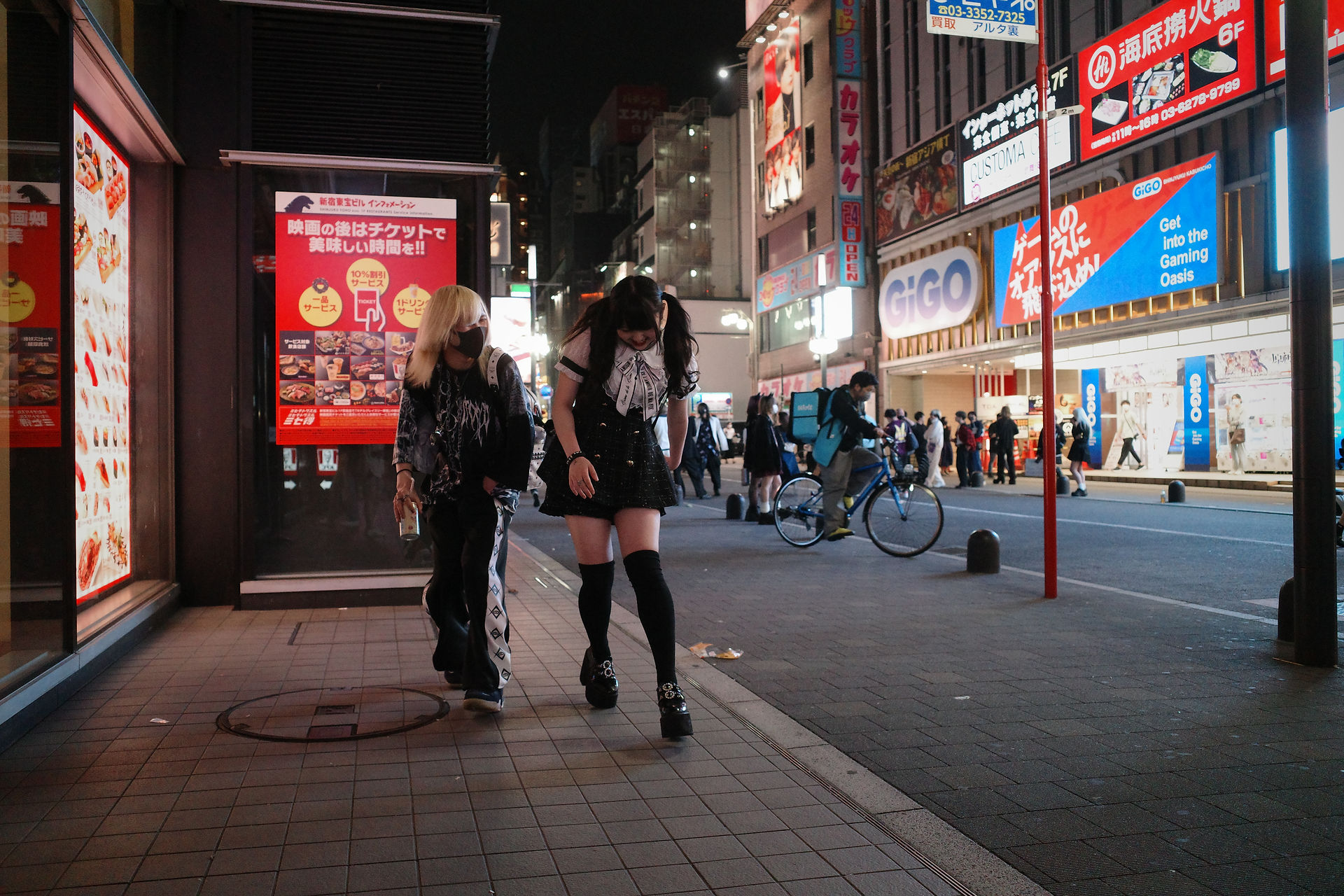
Space & Boundaries
Characteristics of the Hiroba
by Kiara
Introduction
There is a hiroba in Kabukicho by the Toho cinema building where the Toyoko Kids gather together. Despite it being one of the largest red light districts in Japan, the Toyoko kids come to the hiroba to hang around together from late afternoon into the night everyday. The map is of the hiroba and where the toyoko kids occupy and where people often are. There are many people who use the hiroba, to socialise, to wait for someone, to live stream on social media, to rest, and so on. What makes the hiroba the hiroba it is? What are the characteristics of the hiroba that the Toyoko kids come to everyday? In order to understand their use of space, it is important to have an idea of what kind of place the hiroba is.
Open Space
The hiroba besides the Toho Cinema building is an open space for the public to use. It is not a confined space that the boundaries are weekly defined. It is located between the Ichibangai and next street as in figure 1, where people are able to walk through to get to either streets. There are tall buildings such as a hotel, game centre, studio, and shops.

Node
The hiroba is a node, where activities and paths come together, as well as the centre point of districts (LeGates) place where people gather together and activities happen. The streets lead to this point and there are a natural flow of people to the hiroba. There are different types of people that come and socialise, drink, dance, take tiktok, and anything that they want to do. It is
Strangers interacting
The hiroba is a place where all types of people gather and socialise. People often do not talk to strangers in public places to socialise, however the hiroba is a place where interacting with strangers happens commonly. It is an environment where people feel comfortable talking to others. There was a instance, where a toyoko kid went up to a guy and started talking to a man sitting on the rails. He went up to the man and said 「あのどこかであったことありますか?」(Have we met before?) and the man replied 「ないっす」(nope). The conversation was distant and only the beginning could be observed however they were in a conversation for a long time. They were both in the conversation and enjoying it until the toyoko kids left after 10 to 20 min.
Acceptance of diversity and difference
The hiroba being in Kabukicho as well as an open space is more accepting of diversity and differences. People are less judged for what they wear or how they act. It can be said that people are not actually accepting but rather simply do not care. For example, there was a elder man in his 60s to 70s wearing neon clothes with flashy neon light’s on them, riding a bicycle. He stood out significantly out however people were not bothered with him at all. Some would glance but other will not even look in his directions. People have a blaze attitude where they acknowledge enough to avoid and do not engage.
Monitored by security
According to Malone, K. (2002) on, Street life: youth, culture and competing uses of public space. Environment and Urbanization, open spaces are often not heavily policed. However, in the case of the hiroba, there are security guards at all times and occasionally police chacking the toyoko kids. When the security guard spotted a toyoko kid litting his cigarette, he began walking in his direction. The security guard warned him and the boy took out his cigarette. But the moment the security guard turned his back, he took out his cigarette again. Despite it being monitored, it is not enforced nor effective.
For more information on security guards, click here!
Sections
space & Boundaries
